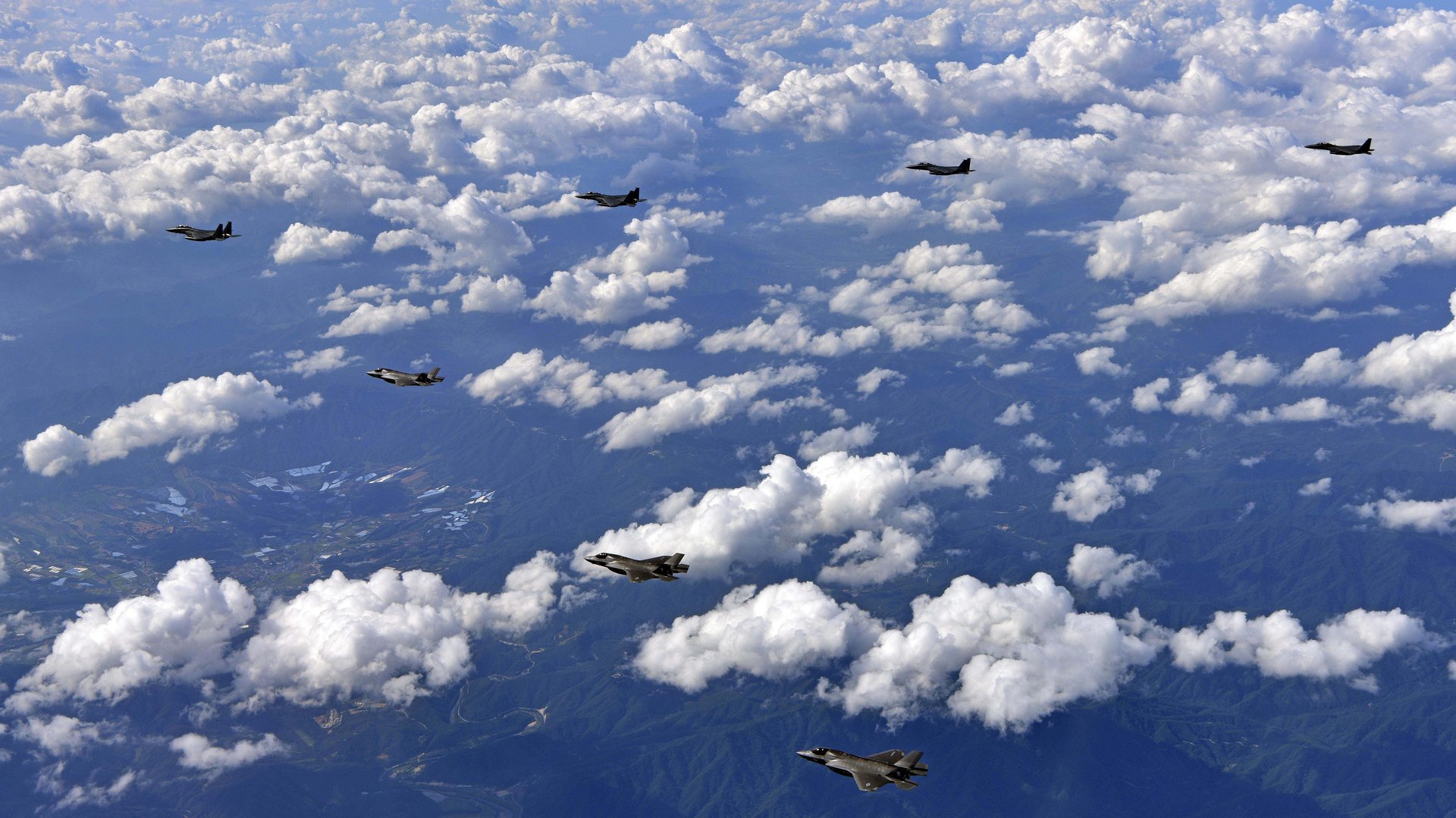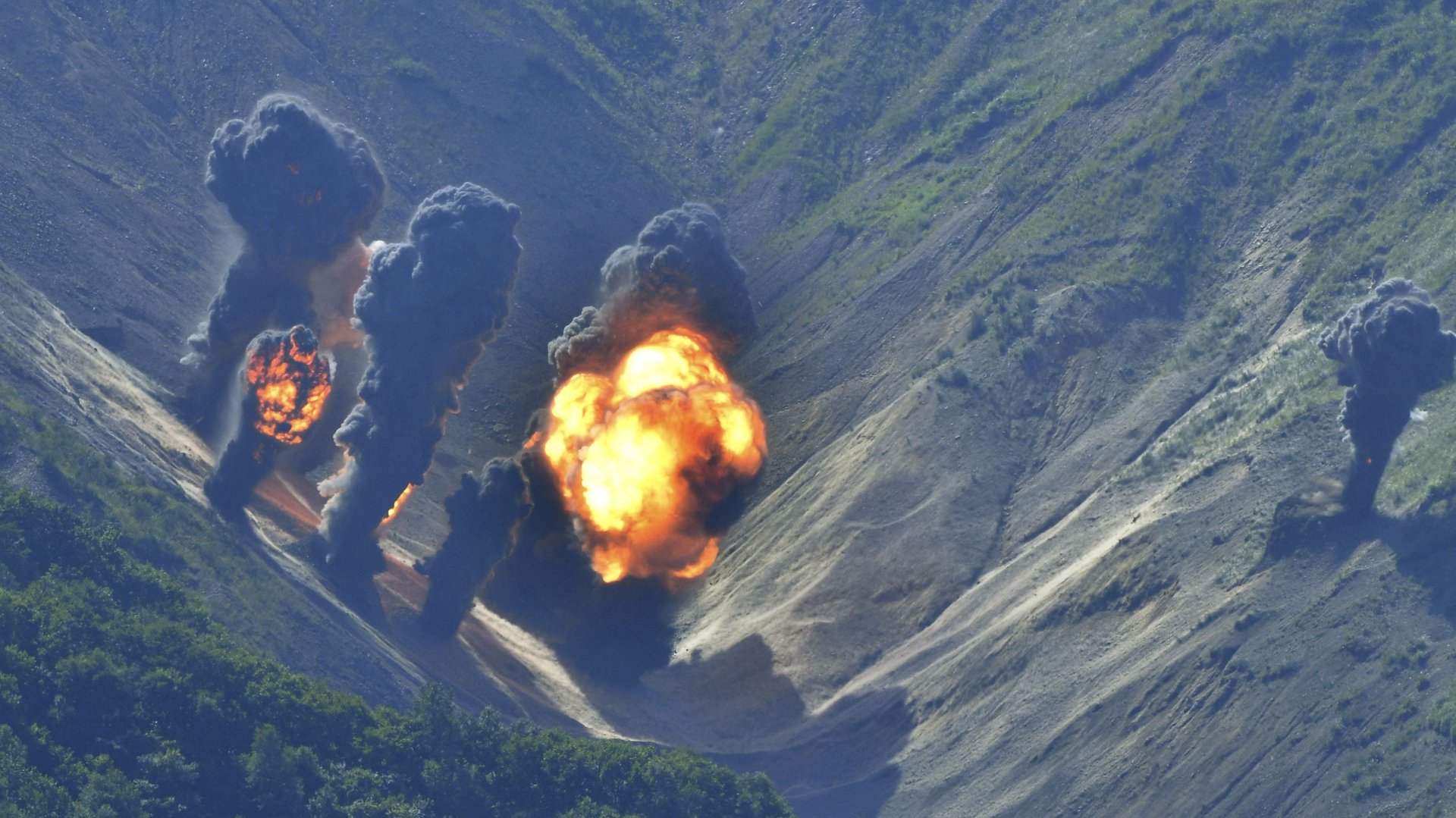The site of the 2018 Winter Olympics just hosted bombing drills to intimidate North Korea
In less than six months the South Korean province of Gangwon will proudly host the 2018 Winter Olympics. Today, it hosted something of a different nature: bombing drills designed to intimidate North Korea.


In less than six months the South Korean province of Gangwon will proudly host the 2018 Winter Olympics. Today, it hosted something of a different nature: bombing drills designed to intimidate North Korea.
Gangwon, a northeast province that borders North Korea, is home to Pyeongchang County. In 2011 the International Olympic Committee named Pyeongchang the host of the 2018 Winter Olympics. That was well before North Korea dramatically increased the number of its missile launches starting in 2014, or fired off, as it did this month, an intercontinental ballistic missile capable of reaching the continental US.
The latest North Korean launch, on Aug. 29, involved sending a missile over Japan into the Pacific, an act the Japanese prime minister called an “unprecedented, serious, and a grave threat to our nation.” North Korean leader Kim Jong-un said yesterday the launch was a first step in a Pacific operation and a “meaningful prelude” to containing the US island territory of Guam, where the American military has a strong presence.
The bombing drills involved warplanes from both the US and South Korea. The US sent two B-1B supersonic bombers from a base in Guam and four F-35 stealth fighter jets from another base in Japan. South Korea added four F-15 fighters to the mix. The drills involved live-fire exercises and precision strikes against simulated core North Korean facilities.

More such intimidation could be forthcoming. Today US defense secretary Jim Mattis agreed with his Japanese counterpart Itsunori Onodera to strengthen pressure on North Korea “in a visible manner,” while US president Donald Trump tweeted yesterday that “talking is not the answer” when it comes to reining in North Korea.
Today also marks the end of the annual “Ulchi-Freedom Guardian” exercises, which began on Aug. 21. Conducted by the US and South Korea, the defense drills are viewed by Pyongyang as a prelude to invasion.
There are no indications so far that the brewing tension on the Korean Peninsula will lead to major changes for the Winter Olympics. But the drills highlight the disjoint between the war games on the one hand and athletic games on the other. An International Olympic Committee spokesperson said earlier this month (paywall), “We are monitoring the situation on the Korean Peninsula and the region very closely.”